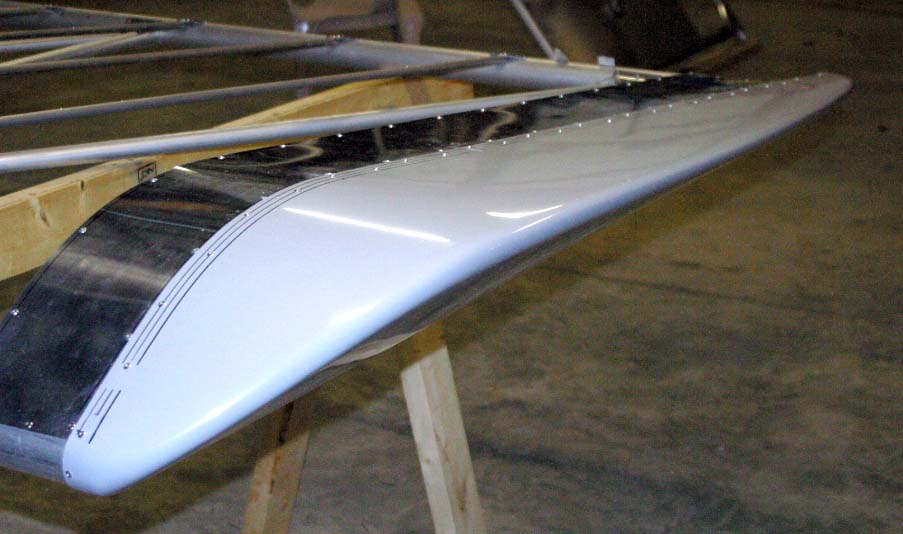It is preferable to apply a two-part epoxy primer prior to painting your fiberglass parts. There are several epoxy primers that can be used with excellent results. If you fail to use a good epoxy primer before applying your finish color paint, the finish paint will probably not last very long, peeling off of the fiberglass long before you think it should. In some quarters, knowledgeable fiberglass fabricators also believe that some color coat painting systems tend to deteriorate and damage the underlying fiberglass materials. In this section, we hope to demonstrate the proper way to prepare your fiberglass parts for painting.
Some of the fiberglass parts you may elect to add to your Challenger include the nosecone, Hoerner wing tips, wheel pants, and gap covers. Work needing to be done to the unfinished fiberglass parts may include cutting, triming, drilling, filling, filing, and sanding.
The following list contains some of the items you will need:
- A rasp or Bastard file
- A portable electric drill and drill bits
- An electric grinder
- A painting respirator
- 320 & 400 grit wet or dry sandpaper
- "Super fil" epoxy filler
- A suitable paint prep cleaning solution
- Two-part Epoxy primer paint
- Color coat system (paint and thinner)
|









